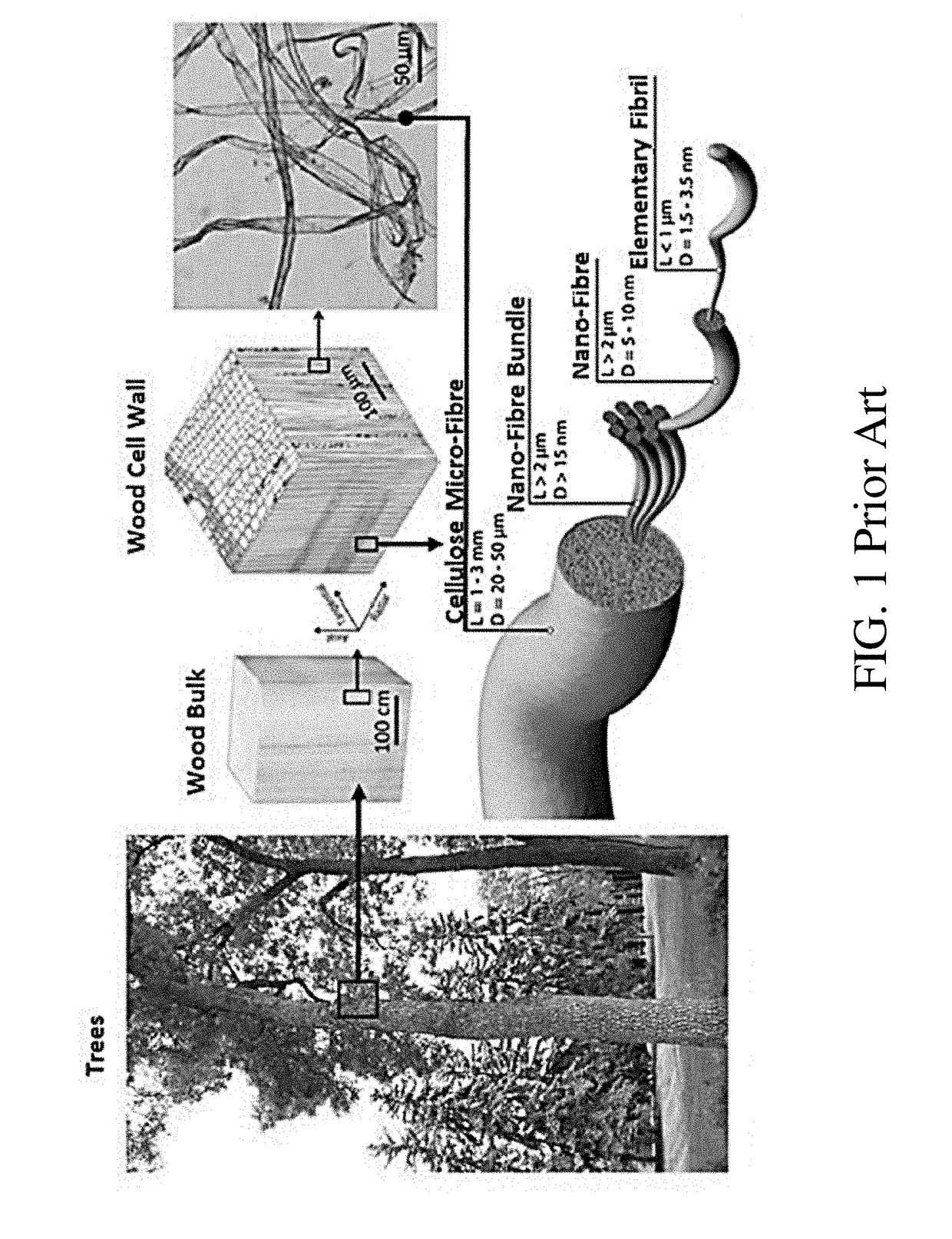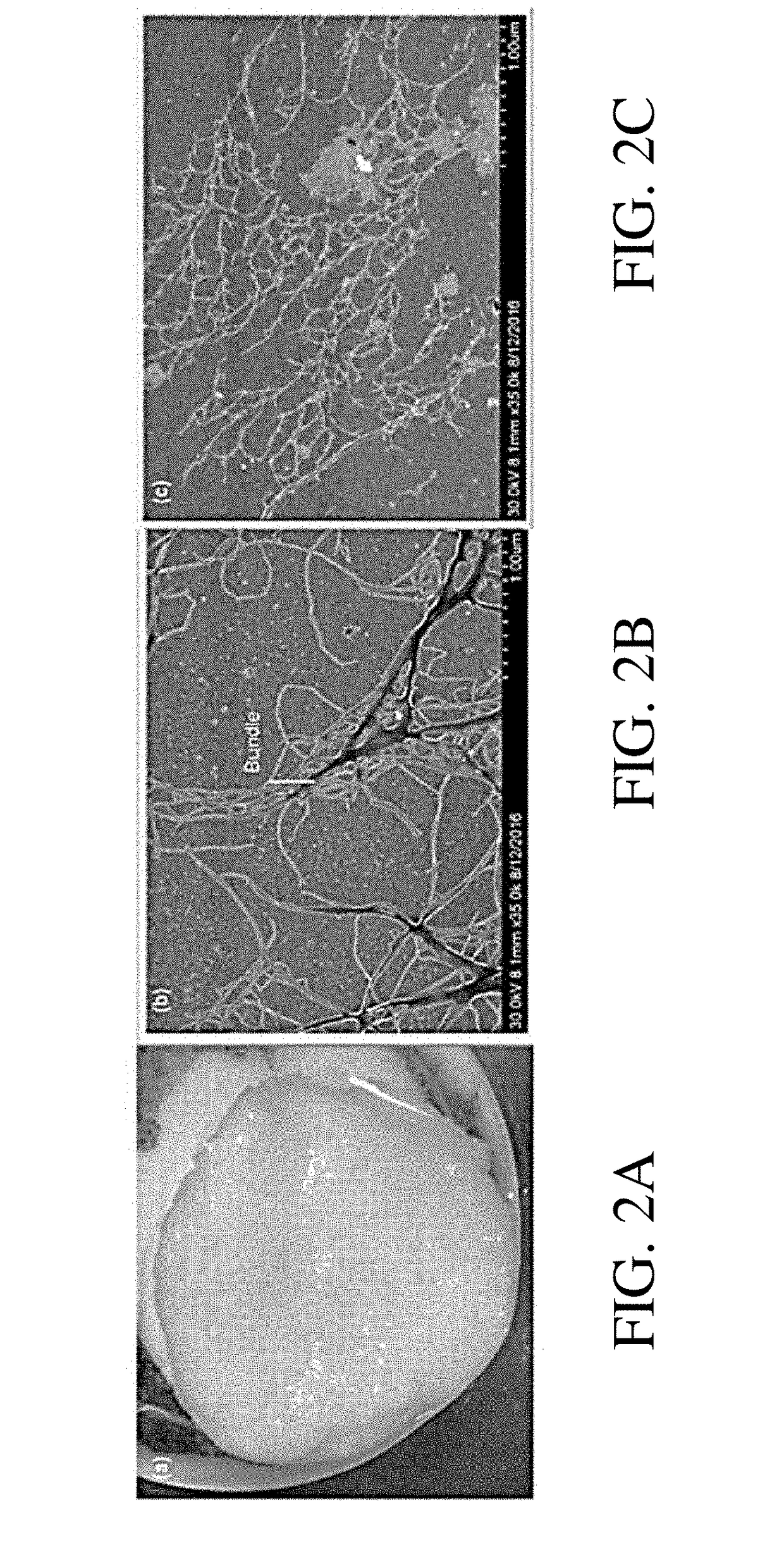Cementitious inorganic material containing cellulosic nanofibers
a technology of cellulosic nanofibers and cementitious inorganic materials, which is applied in the direction of cement production, solid waste management, sustainable waste treatment, etc., can solve the problems of reducing the life of cement and concrete, increasing the cost of society in both economic and environmental terms, and the application of nanotechnology in cement and concrete remains limited on a commercial level. , to achieve the effect of improving the resistance to sulphate attack, enhancing the durability of cement, and improving the durability of cemen
- Summary
- Abstract
- Description
- Claims
- Application Information
AI Technical Summary
Benefits of technology
Problems solved by technology
Method used
Image
Examples
examples
[0040]The present invention is further described with respect to the following non-limiting examples. These examples are intended to illustrate specific formulations according to the present invention and should not be construed as a limitation as to the scope of the present invention.
[0041]Here, four different Portland cement based binders and mortar mixtures are prepared to have up to 0.5% CNF by volume fraction. After 28 days of moist curing, the mortar specimens are subjected to accelerated sulphate attack for 12 weeks. Unidirectional penetration of sulphate is determined according to a modified ASTM C114 method. Additionally, the change in length is measured in accordance with ASTM C 1012. The results show that CNF visibly reduces the penetration of sulphate ions inside the mortar. As well, it effects a marked reduction in the associated expansion. Of particular significance to the construction industry, it was seen that at 0.3-0.5% by volume fraction, CNF imparts as much resis...
PUM
| Property | Measurement | Unit |
|---|---|---|
| diameter | aaaaa | aaaaa |
| length | aaaaa | aaaaa |
| 2θ | aaaaa | aaaaa |
Abstract
Description
Claims
Application Information
 Login to View More
Login to View More - R&D
- Intellectual Property
- Life Sciences
- Materials
- Tech Scout
- Unparalleled Data Quality
- Higher Quality Content
- 60% Fewer Hallucinations
Browse by: Latest US Patents, China's latest patents, Technical Efficacy Thesaurus, Application Domain, Technology Topic, Popular Technical Reports.
© 2025 PatSnap. All rights reserved.Legal|Privacy policy|Modern Slavery Act Transparency Statement|Sitemap|About US| Contact US: help@patsnap.com



